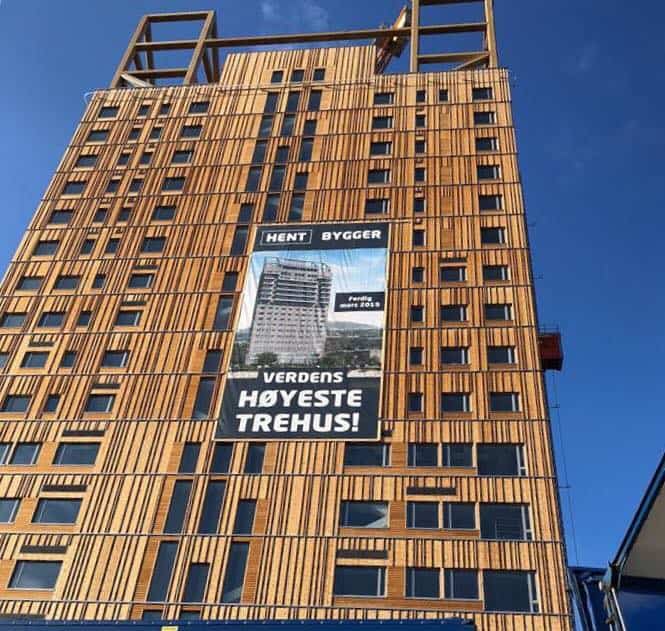
The steady rise of the world’s urban population will drive an immense demand for new housing, commercial buildings, and other infrastructure across the planet by midcentury. This building boom will likely escalate global carbon emissions to dangerous levels and intensify climate change — particularly if it relies on traditional materials such as concrete and steel.
But if society is able to use more wood-based products to meet this building demand, this urban growth might actually present an opportunity to mitigate climate change, according to a new paper led by researchers at Yale and the Potsdam Institute for Climate Impact Research (PIK).
Writing in the journal Nature Sustainability, a multidisciplinary team of researchers and architects predicts that designing mid-rise urban buildings with engineered timber — rather than relying mainly on carbon-intensive materials — has the potential to create a vast “bank vault” that can store within these buildings 10 to 68 million tons of carbon annually that might otherwise be released into the atmosphere.
Simultaneously, society would drastically reduce carbon emissions associated with the construction sector, said Galina Churkina, who led the collaborative research while she was a visiting fellow at the Yale School of Forestry & Environmental Studies (F&ES).
“Since the beginning of the industrial revolution we have been releasing into the atmosphere all of this carbon that had been stored in forests and in the ground,” said Churkina, who is a senior scientist at PIK. “We wanted to show that there can be a vision for returning much of this carbon back into the land.”
Beyond that, achieving a large-scale wood-based construction sector has the potential to create a new “symbiotic relationship” between natural systems and cities, said Alan Organschi, another author, from the Yale School of Architecture and Gray Organschi Architecture in New Haven.
This article from last year also in Yale Environment, looks at some concerns of people in Oregon.
The forestry part is what has some skeptical of how ecologically sound mass timber is and, if and when it’s scaled up, whether it will truly provide a planetary climate solution. In a letter to the city of Portland last year, representatives of Oregon environmental groups — including the Audubon Society, the Sierra Club, and Oregon Physicians for Social Responsibility — raised serious doubts about mass timber as a green climate solution and questioned the city’s plan to use it.
First and foremost, they said, is the need to certify that wood is logged sustainably and certified as such. “Without such a requirement,” the letter stated, the city “may be encouraging the already rampant clear-cutting of Oregon’s forests… In fact, because it can utilize smaller material than traditional timber construction, it may provide a perverse incentive to shorten logging rotations and more aggressively clear-cut.”
Such industrial-type forestry — large-scale plantings of trees selected to grow fast — creates a “biological desert,” said Talberth, of the Center for Sustainable Economy. “And it’s driving the extinction of thousands of species. Mass timber is mass extinction.”
“We must ensure that mass timber drives sustainable forestry management, otherwise all of these benefits are lost,” agreed Mark Wishnie, director of forestry and wood products at The Nature Conservancy. “To really understand the potential impact of the increased use of mass timber on climate we need to conduct a much more detailed set of analyses.”
Wishnie said The Nature Conservancy, the U.S. Forest Service, and a dozen universities and other research institutions are launching a new analysis of mass timber.
At the same time, he said. “there is enough data to say the [CO2] savings are significant.” He said the substitution of concrete and steel with wood and the long-term carbon storage in mass timber buildings make up about 75 percent of the total benefit, and the forestry end, if executed sustainably, about 25 percent.
I’m not sure about the logic that industry folks would more aggressively clearcut or shorten rotations.. it would be interesting to sit down with them and see how their management might or might not change. Since a great deal of Oregon is public lands anyway, that management would be unlikely to change. Perhaps if federal lands were certified? Oh, but the Sierra Club doesn’t support commercial harvesting there. Seems like CLT is between a rock and hard place with them.. on federal lands they don’t want trees sold, and we can’t trust the people on private lands.
Or there could be a separate new kind of “waste wood certification” where folks certify that otherwise the material would be left or burned.